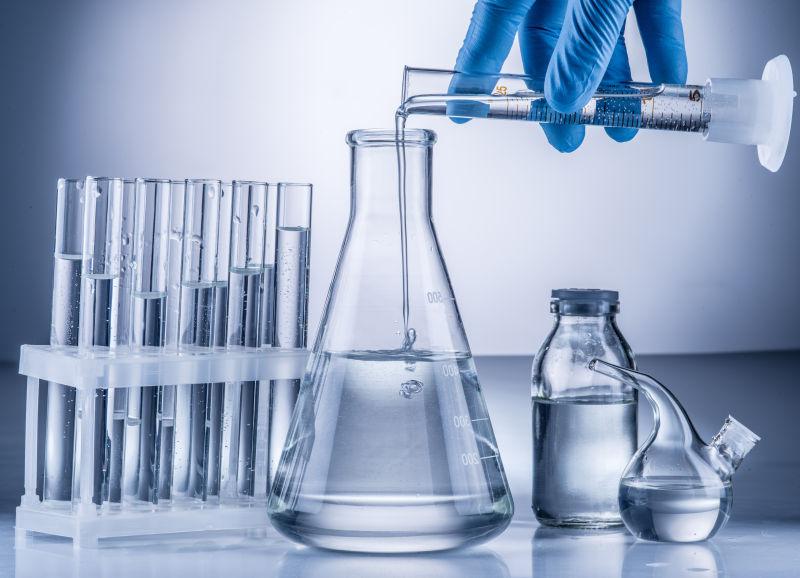



1-propanol participates in oxidation, dehydration, and esterification reactions, with the choice of catalyst, reaction conditions, and substrate playing crucial roles in determining the product distribution and reaction kinetics. Understanding these factors is essential for the efficient utilization of 1-propanol in various chemical processes.

Figure 4.Oxidation of 1-propanol
1-Propanol can be oxidized to various products such as propanal, propionic acid, and acetone. The oxidation
reaction is influenced by factors like catalyst type, particle size, reaction conditions, and the presence of
water.
Pt nanoparticles of varying sizes (2-7 nm) were found to catalyze the oxidation of 1-propanol to propanal at
solid-gas and solid-liquid interfaces, with the reaction rate being an order of magnitude higher at the
solid-gas interface[1]. Water promoted the oxidation in the liquid phase but inhibited it in the gas phase,
suggesting different reaction mechanisms[1].
Heteropolyoxometalates have also been used to catalyze the oxidation of 1-propanol to propionic acid using
hydrogen peroxide[2]. The reaction of 1-propanol with ozone in aqueous media occurs via hydride transfer,
H-abstraction, and insertion mechanisms, yielding products like propionaldehyde, propionic acid, acetaldehyde,
and hydrogen peroxide [3].

Figure 5. Dehydration Reaction of Alcohols
1-Propanol can undergo dehydration to form propene. Various catalysts such as zeolites and
silica with sulfonic acid groups have been studied for this reaction.
Mesoporous silica with strongly acidic sulfonic sites were found to catalyze the dehydration of 1-propanol to
propene and ether compounds[4]. M-ZSM-5 (M = H, V, Cu, or Zn) zeolites were also effective in producing propene
from 1-propanol at temperatures below 230 °C[5]. DFT calculations suggest that in aqueous phase dehydration
over H-ZSM-5, dimeric and trimeric complexes of 1-propanol and water provide kinetically feasible reaction
pathways[6].
The dehydration mechanism and kinetics of 1-propanol on HZSM-5 zeolite were elucidated, showing that water and
excess 1-propanol inhibit the reaction by stabilizing adsorbed 1-propanol rather than through competitive
adsorption[7].

Figure 6. Reaction of ethanoic acid and 1-propanol
1-Propanol can react with carboxylic acids to form ester compounds. Acidic catalysts like ion exchange resins
are commonly used for these reactions.
The esterification of nonanoic acid with 1-propanol over Amberlyst 15 catalyst was studied, and the kinetics
were modeled using the Eley-Rideal mechanism with UNIFAC-estimated activity coefficients[8]. Similarly, the
esterification of pentanoic acid with 1-propanol catalyzed by sulfonated cation exchange resin was investigated,
with the surface reaction found to be the rate-limiting step[9].
Lipase-catalyzed enantioselective esterification has been used for the kinetic resolution of racemic
1-phenyl-1-propanol, with Novozym 435 exhibiting the highest enantioselectivity[10].
1. Liu, F., et al., Catalytic 1-Propanol Oxidation on Size-Controlled Platinum Nanoparticles at
Solid–Gas and Solid–Liquid Interfaces: Significant Differences in Kinetics and Mechanisms. Journal of
Physical Chemistry C, 2019. 123: p. 7577-7583.
2. Liu, M., et al., Oxidation of 1-propanol to propionic acid with hydrogen peroxide catalysed by
heteropolyoxometalates. BMC Chem, 2021. 15(1): p. 23.
3. Reisz, E., et al., Reaction of 1-propanol with Ozone in Aqueous Media. Int J Mol Sci, 2019.
20(17).
4. Mokhtari, M., L. Kharbouche, and H. Hamaizi, Catalytic Dehydration of 1-Propanol Over Silica
Containing Sulfonic Acid Groups. Materials Research, 2019.
5. Lepore, A.W., et al., Catalytic Dehydration of Biomass Derived 1-Propanol to Propene over M-ZSM-5 (M =
H, V, Cu, or Zn). Industrial & Engineering Chemistry Research, 2017. 56: p. 4302-4308.
6. Mei, D. and J.A. Lercher, Mechanistic Insights into Aqueous Phase Propanol Dehydration in H-ZSM-5
Zeolite. Aiche Journal, 2017. 63: p. 172-184.
7. Zhi, Y. Elementary reactions of 1-propanol on HZSM-5. 2015.
8. Sharma, M.C., R.K. Wanchoo, and A.P. Toor, Amberlyst 15 Catalyzed Esterification of Nonanoic Acid with
1-Propanol: Kinetics, Modeling, and Comparison of Its Reaction Kinetics with Lower Alcohols. Industrial &
Engineering Chemistry Research, 2014. 53: p. 2167-2174.
9. Sharma, M.C., A.P. Toor, and R.K. Wanchoo, Esterification of Pentanoic Acid with 1-Propanol by
Sulfonated Cation Exchange Resin: Experimental and Kinetic Studies. Chemical Engineering Communications,
2015. 203: p. 801 - 808.
10. Karadeniz, F., E. Bayraktar, and U. Mehmetoglu, Kinetic resolution of racemic 1-phenyl 1-propanol by
lipase catalyzed enantioselective esterification reaction. Artif Cells Blood Substit Immobil Biotechnol,
2010. 38(5): p. 288-93.